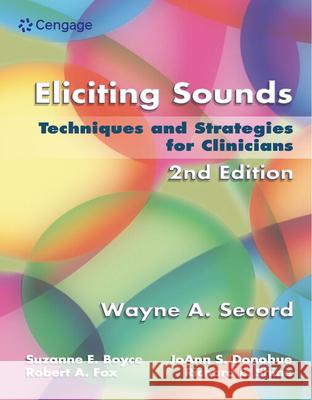Eliciting Sounds: Techniques and Strategies for Clinicians » książka
Eliciting Sounds: Techniques and Strategies for Clinicians
ISBN-13: 9781401897253 / Angielski / Spiralna / 2007 / 192 str.
Most speech-language clinicians will, at one time or another, experience the frustration that often accompanies attempts to elicit new speech sound behaviors. This is especially true when a client does not have a target sound in his or her response repertoire. Clinicians and students working in clinic will often search for that one strategy, trick, or technique that will work in these challenging situations. Eliciting Sounds: Strategies & Techniques for Clinician, 2nd Edition is designed to provide the clinician and the speech-language pathology student with a quick, easy-to-use checklist of techniques for immediately evoking any phoneme targeted for remediation. Benefits: It doesn't get caught up in articulation theory and instead provides specific techniques to teach the clinician how to enable the client to produce speech sounds. Book is organized in two main sections: first a section on consonant sounds where there is a chapter on all consonant sounds and second a section on vowel sounds where there is a chapter on all vowel sounds; there is also a dedicated section on diphthongs. This organization is logical and makes the content easy to quickly reference. For Consonants, in addition to a recap of the place/manner/voicing features for a consonant, the book includes an explanation of how the phoneme is produced, common errors encountered by clinicians, phonetic placement techniques, a summary of the specific moto-kinesthetic stimulation prescribed for that phoneme, and a list of sound approximation techniques involving both progressive approximation and modification for other sounds. For Vowels, coverage includes an overview of the articulatory characteristics of vowels, discussion of common errors, a description of how each vowel is produced, and strategies for eliciting correct vowel production, including a summary of the moto-kinesthetic stimulations for each. The chapter on Diphthongs explains the articulation of diphtho











